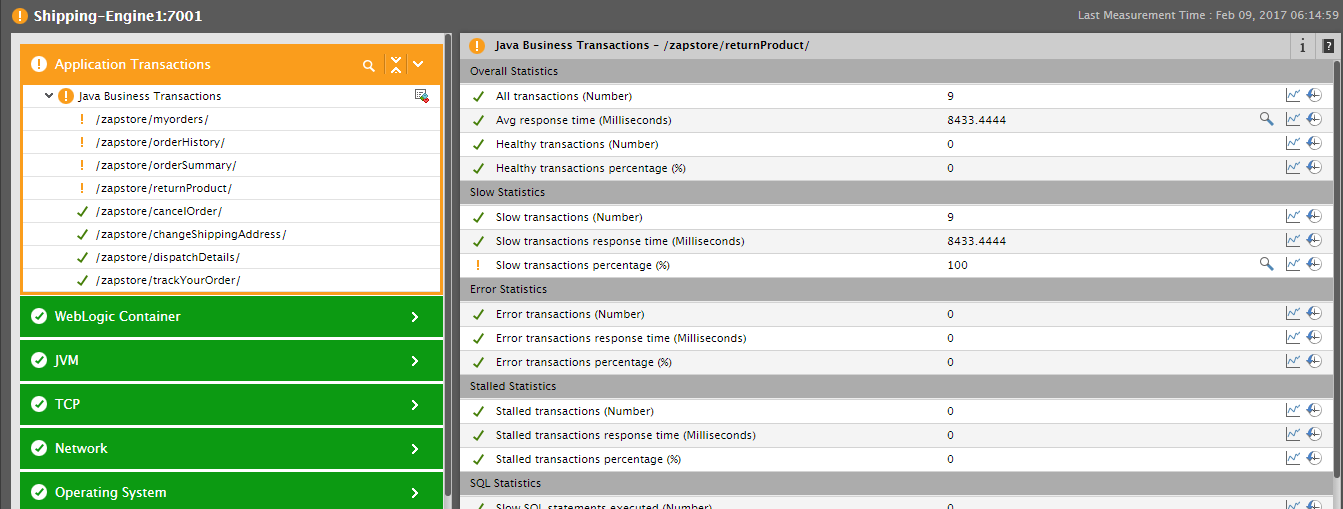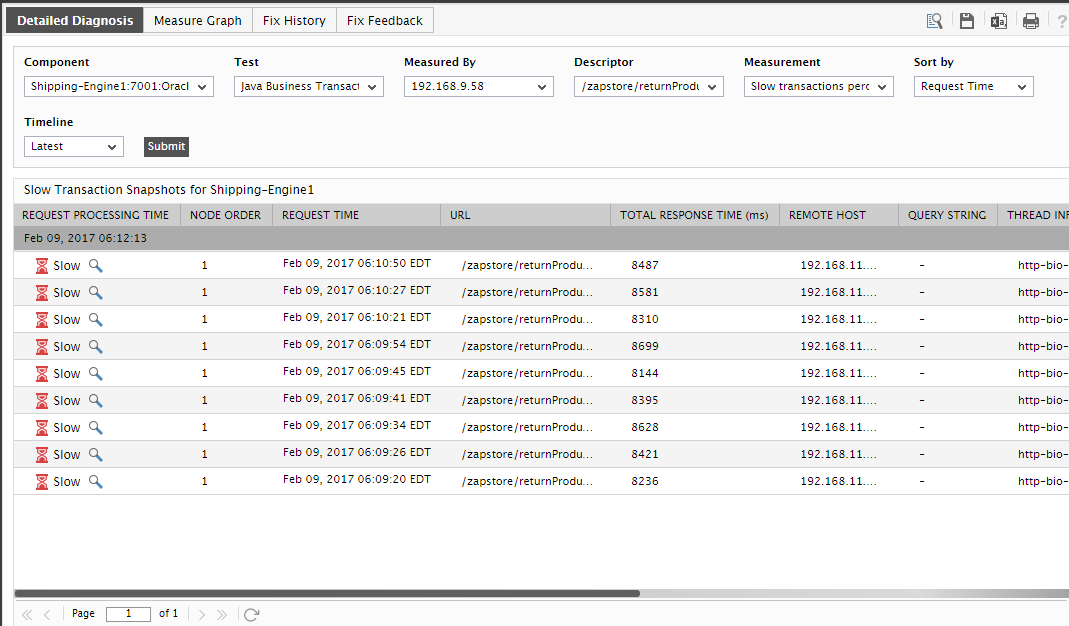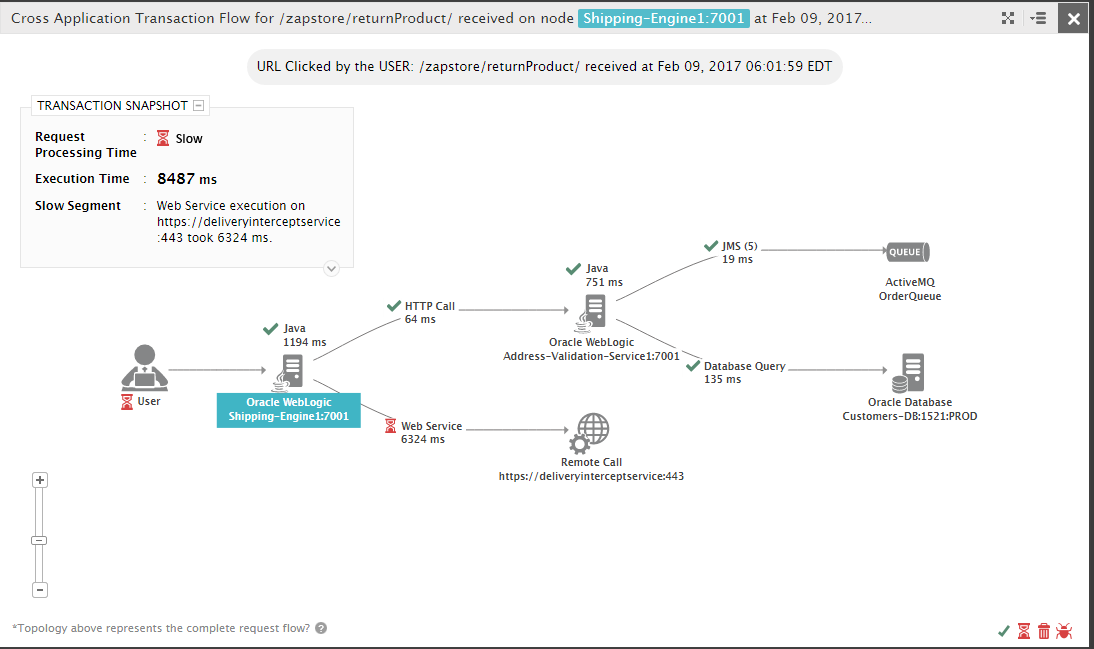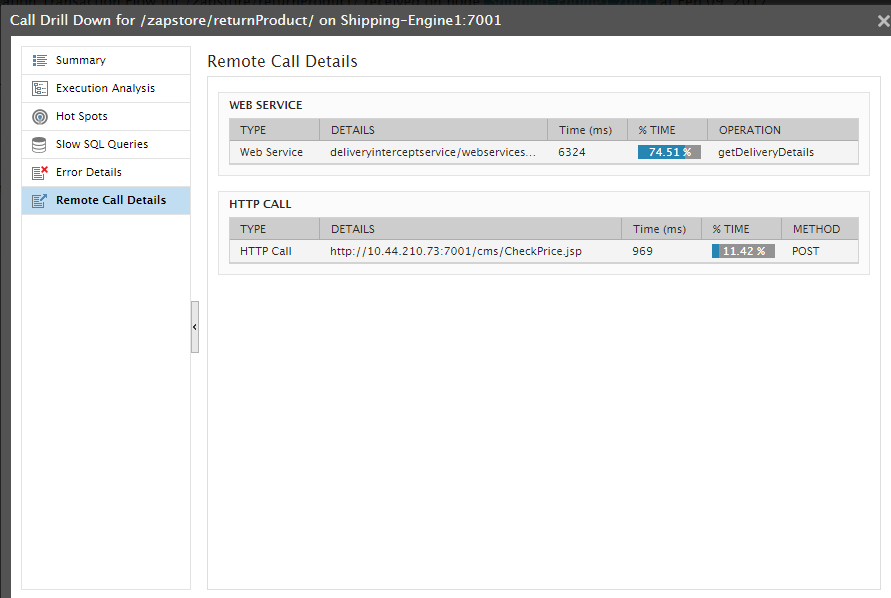Detailed Diagnostics Revealing that a Remote Service Call is the Reason Why a Transaction Slowed Down
According to Figure 1 below, slowness has been detected in 9 transactions of the pattern, /Easykart/Login.jsp. To know the exact URLs of the slow transactions, click on the ‘magnifying glass’ icon against Slow transactions in Figure 1.

Figure 1 : The Layers tab page revealing that 100% of the transactions of the pattern /zapstore/returnProduct are slow
Figure 2 will then appear listing the slow transactions URLs. To drill down to the source of the slowness of any of these transactions, click on the ‘magnifying glass’ icon alongside the ‘Slow’ icon of that transaction.

Figure 2 : Detailed diagnosis listing the slow transactions of the pattern /zapstore/returnProduct
Figure 3 will then appear depicting how the transaction flows. From Figure 3, it is clear that a Web service call made by the Oracle WebLogic server, Shipping-Engine1:7001, to a delivery intercept service in the backend is slowing down the transaction.

Figure 3 : Cross-application transaction flow depicting that the problem is with the Web Service call
To know more about this call, click the Web Service icon in Figure 3. A Remote Call Details window will then open listing all the remote calls made by the Shipping-Engine1:7001 server. From this window you can infer that the Web Service call made to the delivery intercept service is consuming nearly 75% of the transaction execution time. As you can see, a few quick mouse clicks from a Slow transaction in Figure 2 has lead you to the precise web service call that is delaying the transaction.

Figure 4 : List of remote service calls made by the Shipping-Engine1:7001 server
